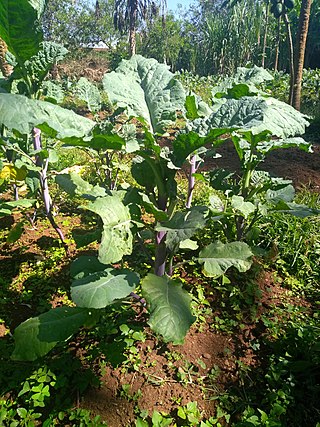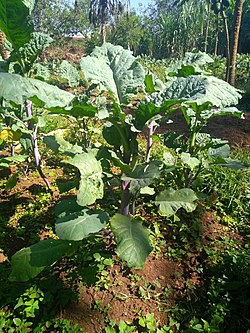Top Qs
Timeline
Chat
Perspective
Brassica carinata
Species of plant in the family Brassicaceae From Wikipedia, the free encyclopedia
Remove ads
Brassica carinata is a species of flowering plant in the Brassicaceae family.[1][2] It is referred to by the common names Ethiopian rape or Ethiopian mustard.[3] It is believed to be a hybrid between Brassica nigra and Brassica oleracea.[4]
The flowers attract honey bees to collect pollen and nectar.
Remove ads
Leaf uses
The plant has a mild flavor, and is eaten as a leaf vegetable. It is known as (Oromo: Raafuu); habesha gomen, (Amharic: ሐበሻ ጎመን).[5] Named varieties include Texsel, which is particularly adapted to temperate climates.[6] Cultivation of Ethiopia mustard as leaf vegetable is limited to small-scale production but it is slowly gaining popularity in rural as well as urban areas where commercial production is taking place.[7]
Remove ads
Seed uses
Although Brassica carinata is cultivated as an oilseed crop in Ethiopia,[8] it has high levels of undesirable glucosinolates and erucic acid.[9] The closely related Brassica napus (rapeseed) is considered a better oilseed crop in comparison.
Brassica carinata has been used to develop an aviation biofuel for jet engines.[10] On October 29, 2012, the first flight of a jet aircraft powered completely by biofuel, made from Brassica carinata, was completed.[11][12] The byproduct of Brassica carinata oil production is utilized in protein meal for animal fodder.[13]
Remove ads
Industrial application
The oil quality profile includes a high percentage of erucic acid (40–45 %) making it highly desirable as a biofuel and for industrial applications such as production of plastics, lubricants, paints, leather tanning, soaps, and cosmetics.[14]
References
Wikiwand - on
Seamless Wikipedia browsing. On steroids.
Remove ads

